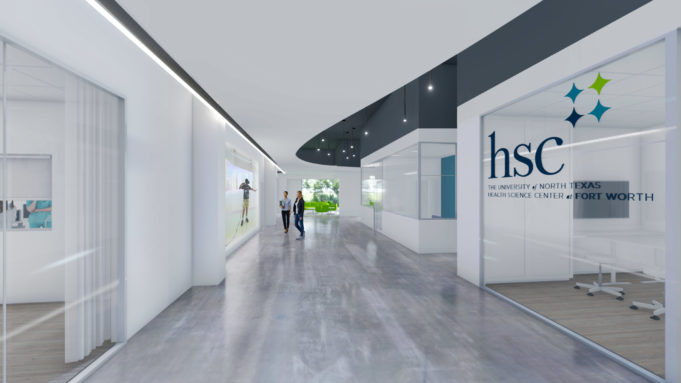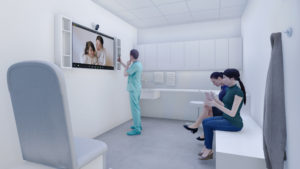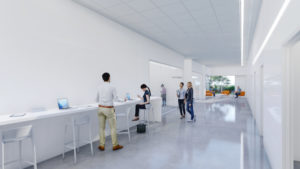Beginning mid-summer, students at the University of North Texas Health Science Center (UNTHSC) will have access to an advanced on-campus simulation center that can replicate a wide range of real-life medical scenarios.
The $6.75 million Regional Simulation Center, which will be centrally located at UNTHSC’s Gibson D. Lewis Library, will utilize immersive virtual reality projectors to recreate on-the-job scenarios for UNTHSC staff and students. Emergency medical service providers, hospital personnel, nursing home staffers, clinical teams, and first responders will use the program to learn how to diagnose and treat illnesses and medical emergencies in one of 14 authentic-looking clinic rooms.
The lab’s fully immersive virtual-reality projection component employs cutting-edge 360 cameras that allow staff to transport students into on-the-job scenarios. The space is designed to be both efficient and versatile, allowing instructors to recreate any medical setting. The rooms can be resized and readopted as needed, according to a UNTHSC spokesperson.
When completed, the Regional Simulation Center will provide advanced training to a campus that contributes around $600 million to the local North Texas economy every year. In 2020, the George W. Bush Institute and Opus Faveo Innovation Development named UNTHSC the most economically impactful U.S. medical school.
The new project, UNTHSC said, will require hiring two staffers for the campus that employs 1,437 staff and faculty members.
Accessibility, program director Karen Meadows said, is key.
“No student should leave our university and say, ‘I didn’t have an opportunity to be fully prepared for my future experience,’ ” the resident nurse continued. “To me, that’s really why the simulation center is here. Some learners take two times, though, and they’ve got it down. Others may need eight, and that learner needs the opportunity to come in and practice. The flexibility that this center offers is going to provide that.”
One UNTHSC student is already excited about the upcoming simulation center.
“I think it’s going to really increase the collaboration between the steadily growing medical community at every level,” Amogh Krishnagiri said. “We have new residents coming from all over the country in a number of fields. UNTHSC can be the hub where they can come share their intelligence and what they’ve learned with us — not just [osteopathic medicine] students, all students. This is a place where we can bring in undergraduate students and pre-meds and help them really home in on what they want to do and give them valuable experience.”
The simulation center is scheduled to open in late June. Soon after, UNTHSC said, instructors from Harvard University’s Center for Medical Simulation will visit Fort Worth to train UNTHSC faculty. Students and area medical providers like doctors and nurses will have access to the lab starting in July, something UNTHSC said will benefit the broader medical community by providing a space for customized training programs.
“You couldn’t ask for better training,” said Dr. Bharti Chaudhari, simulation director for emergency medicine at John Peter Smith Hospital. “It is as real as possible yet as deliberate and critical as you need it to be. You’re not just teaching rote memorization. You’re teaching concepts, things that teach students how to think critically. When learners leave this area, they’re going to be a good doctor wherever they go.”















There is never a substitute for learning with and treating REAL patients. Doctors treat people and simulators will never be a substitute for live interactions. We’re training doctors to be machines instead of being caregivers. AI is negatively changing society.